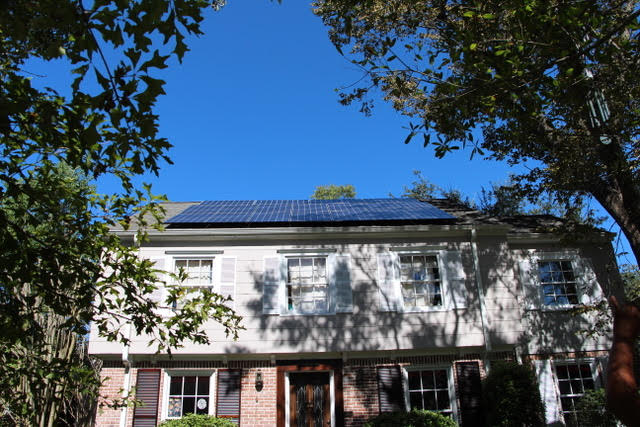Challenges and opportunities for solar growth in Texas

(This is part two of our series on energy and solar in Texas. Part one covered Texas’ unique deregulated energy market, and part three makes the case for rooftop solar in Texas.)
Texas’ unique energy market creates opportunities and challenges for growing solar. Texas is one of the few states without one or more powerful, well-financed, investor-owned utilities standing in the way of solar energy. But, a conservative and infrequently convened legislature (every two years) means that state-level energy policy has not provided support for solar energy growth.
Solar came late to Texas. While nearly 10,000 MW of wind capacity had come online in Texas by the end of 2010, barely 30 MW of solar PV existed at that time. Installation costs were high. There was little solar-specific demand from corporate purchasers, retail electric providers (REPs), or customers, and even fewer regulatory incentives. This is despite Texas having the single strongest solar resource in the nation. Texas receives enough sunshine in a single month to generate as much power as all of the oil exported in its history. Yet, very little solar was developed in Texas until 2010, when the project economics began to catch up to those for wind.
Between 2012 and 2017, solar prices in Texas fell 53%. This was largely due to hardware cost reductions. Falling prices spurred rapid growth in solar deployment at utility and commercial scales. Today, Texas is home to 2,000 MW of installed solar capacity, most of it in large solar farms in the western half of the state. Texas now ranks seventh in the nation for total solar capacity. Nearly 80% of Texas solar has been installed within the past two years, and ERCOT (the Texas grid operator) expects more than 6,000 MW more within the next five years. That’s enough solar energy to power up to three million homes.
Solar’s cost competitiveness has been the primary reason for its growth in Texas. On the large scale, solar quickly reached cost parity with conventional generation sources, inspiring utilities and REPs to develop, or contract for the power generated by, utility-scale solar farms. For example, in 2014, both Austin Energy (the municipal utility serving the City of Austin) and CPS Energy (the municipal utility serving the San Antonio area) commissioned two large solar farms (150 MW and 400 MW, respectively). Both projects famously produced electricity at five cents per kWh, the lowest-cost solar electricity generated in the state at that time. In 2014, the average real-time energy price in the Texas wholesale market hovered slightly above four cents per kWh, making these projects highly competitive. Fellow utilities and REPs took note, and there was no looking back.
Solar energy can do more than just provide electricity. It also can play an important role in the way electricity is sent over the electric grid. Solar energy is generated close to the source of electricity demand. This means lower transmission and distribution costs.
As other states and regional grid operators grapple with how to establish appropriate policies to support the growth of clean energy, their attempts are harmed by the cartel-like influence that incumbent utilities continue to exert over the market. In Texas, however, these bad actors do not exist. This creates a clearer opportunity for homeowners to become their own energy producers by going solar.
This takes us to the next installment in our series. We’ll look at rooftop solar in Texas and how homeowners can go solar themselves.
